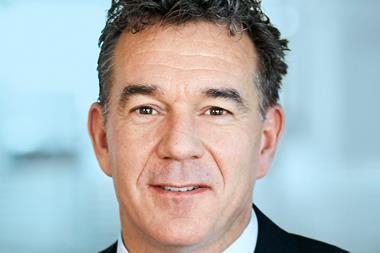Denmark’s pensions industry has welcomed a package of green energy infrastructure measures announced by legislators today, but warned more is needed, particularly given the war in Ukraine.
In a statement today, Insurance & Pension Denmark (IPD) praised the political agreement on initiatives and subsidies to bolster the development of power-to-x (PtX) technology, which enables the storage of surplus electricity.
Tom Vile Jensen, IPD deputy director, said: “A broad majority in the Folketing [parliament] has taken another large and important step towards Denmark as a PtX nation.
“There is reason to praise this, because both pension companies and other firms are in full swing here. PtX is the right way environmentally to get green fuels for heavy CO2 emitters such as trucks, ships, aircraft, for example,” he said.
But IPD said the measures agreed were not enough. “Especially in light of the war in Ukraine, it is not a given that the level of ambition to build an electrolysis capacity of up to 6 GW and a total prioritisation on the part of the government of DKK3bn (€403m) since 2019 is sufficient,” the association said.
Denmark’s Social Democrat government said the agreement had been reached with eight other parties “in the shadow of the serious situation in Europe, where energy dependence and acceleration of green alternatives are more relevant than ever”.
Dan Jørgensen, Minister of Climate, Energy and Utilities, said: “Europe is intensively looking for alternatives to fossil energy and we are busy. Both by becoming green and by becoming more independent from Russian black energy.”
The agreement consists of a DKK1.25bn subsidy scheme in the form of a government tender for hydrogen production, better framework conditions for producers and an extension of business promotion initiatives and funding, the ministry said.
“This means that the government as a whole has prioritised at least DKK3bn for PtX since 2019,” it said.
IPD said the energy industry lobby group Danish Energy estimated that there was an investment need of DKK25-35bn in PtX, and said it took time to get legislation and regulation in place and then raise funding before the actual work on green facilities and infrastructure could begin.
“It is crucial that there is greater clarity about the need for investment in the form of a long-term strategy and an actual investment plan to avoid bottlenecks and delays, as the spread of PtX will require very large investments in facilities and new infrastructure,” IPD said.
In its proposal last week, the EU Commission pointed to PtX and hydrogen as crucial for the EU and Denmark to achieve independence from importing gas from Russia, according to IPD.
“In that light, it is very conceivable that we in Denmark should set the level of ambition higher than for example, 6 GW production via PtX,” Vile Jensen said.
Denmark has the most ambitious 2030 climate target out of the Nordic countries, having pledged to slash emissions by 70% from 1990 levels by that year, and the country’s large pension sector has often expressed the will to provide financing for the green-energy transition.













